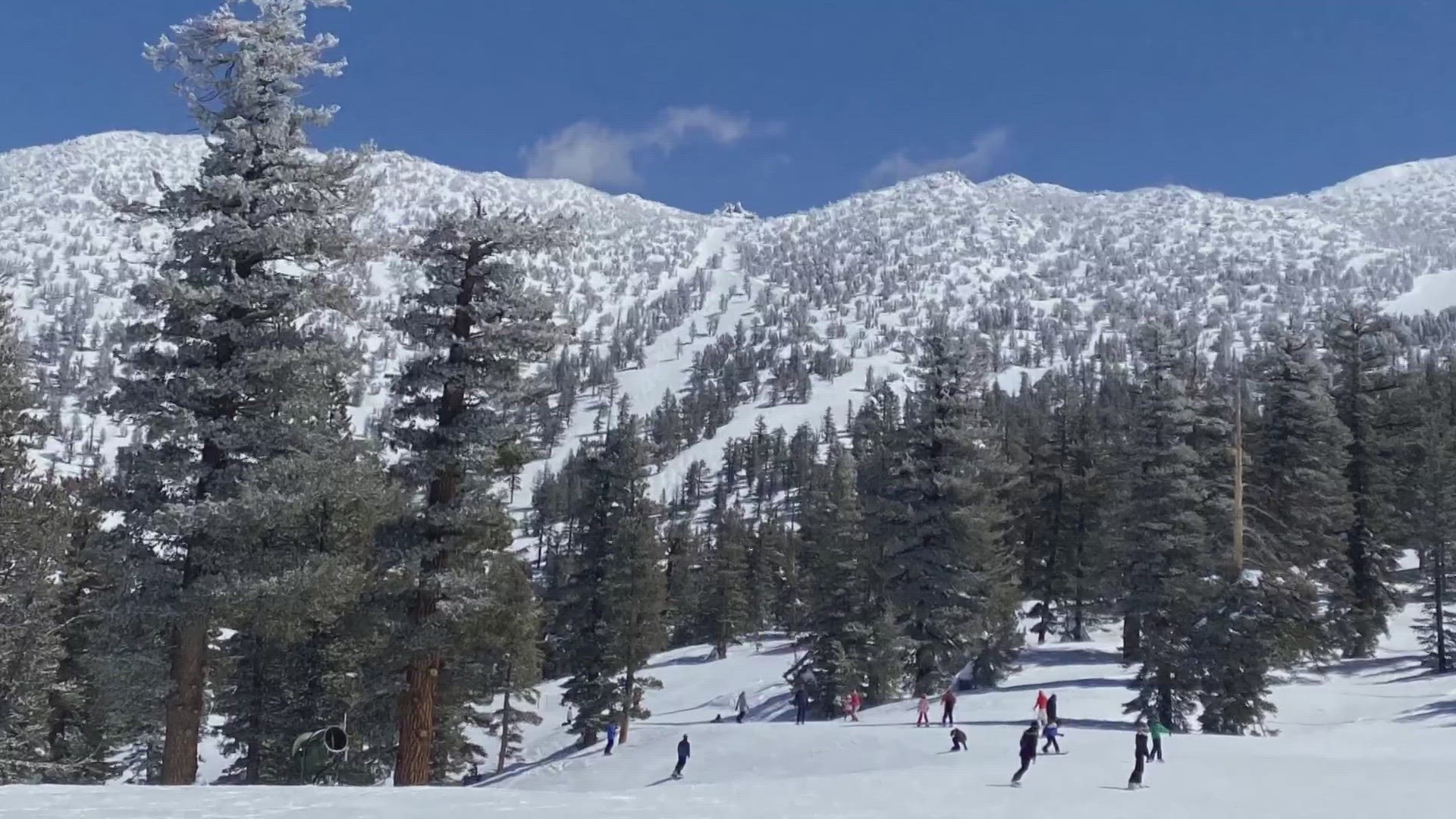SACRAMENTO, Calif. — The 2022-23 winter stands out as a rarity with climate trends showing less snow and more rain falling at lower mountain elevations. New research from the University of California at San Diego's Scripps Institution of Oceanography is showing just how high the snowline will rise by the end of the century.
Researchers found where the rain turns to snow will be climbing an extra 1,600 feet by 2100 if climate change is not addressed. This type of climate shift would greatly impact low elevation ski resorts, losing up to 70% of their lower natural snowpack.
Mike Reitzell with Ski California says this issue can't wait five or six years if the future of skiing wants to stay strong. He says adaptation strategies need to go into place now.
Some resorts have started to move toward sustainability. Diamond Peak in Nevada already received a “Stokes” certification meeting the strict criteria for sustainability. Three California Vail resorts are also making the commitment to be net zero by 2030.
The study shows that in coming years, California will still see the year to year volatility with punctuations of big snowfall. The overall trend though will be for less and less snow at lower elevation.
This will put more pressure on California water managers since snowpack supplies 1/3 of the state's water supply. The state's water storage system is largely set up to hold spring snowmelt in the reservoirs and underground. With less snow and more rain in the Sierra, this could affect the timing and the amount of runoff that fills downstream reservoirs. The future could have more big bursts of early season rain and runoff.
In an ironic twist, the study found the southern Sierra will possibly see higher winter snowfall but only at the highest elevations.
All of this leads to a more delicate balancing act between the whiplash of flood and drought in California.
WATCH ALSO:



















